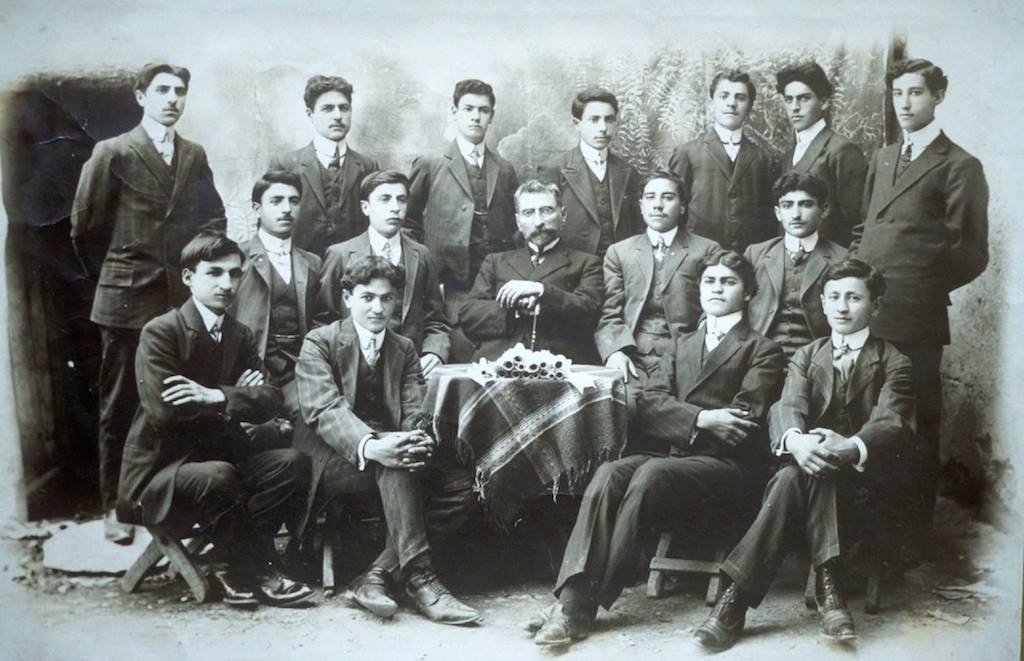Harutyunyan, born in 1860 in the village of Tlgadin (Huylu, now officially known as Kuyulu) south of Harput, is generally known for his newspaper articles, travel notes, plays, and short stories. In these writings, Tlgadintsi not only critically conveys the condition of Armenian properties and monasteries perspective,but also depicts the details of daily life with an ethnographic finesse, and portrays, as Beledian described, an almost silent forewarning of the impending disaster.
TAMAR GÜRCİYAN
I have recently read Krikor Beledian’s article “From Image to Loss: The Writers of Kharpert and Provincial Literature” (‘Armenian Tsopk/Kharpert’, ed. R. G. Hovannisian, Mazda Pub., 2002) which introduced me to Tlgadintsi (Hovhannes Harutyunyan) and his travel writings. Harutyunyan, born in 1860 in the village of Tlgadin (Huylu, now officially known as Kuyulu) south of Harput, is generally known for his newspaper articles, travel notes, plays, and short stories. Beledian asserts that Tlgadintsi’s travel writings published in Hayrenik and Arevelk newspapers possess a literary character. In these writings, Tlgadintsi not only critically conveys the condition of Armenian properties and monasteries perspective,but also depicts the details of daily life with an ethnographic finesse, and portrays, as Beledian described, an almost silent forewarning of the impending disaster. Indeed, these travel writings are a reactionary phenomenon to the migrations, emptying villages, and losses that began before the disaster.
In this article, I will focus on Tlgadintsi’s three travel writings from 1890, 1892, and 1893 titled “Datma vanke” [Tadem Monastery], “Palu,” and “Cambu dbavorutyunner” [Road Impressions]. These writings contain information about villages, monasteries, and the city of Palu in the vicinity of Harput. First, geography and landscape invite us into the story. Palu is enclosed between two mountains and has a narrow horizon like a roof. The buildings step on each other’s roofs and descend down to the shore of Aradzani (Murat River). The Aradzani flows west of the city, washing the lower parts. Following a similar introduction, the author records Palu’s daily life by observing and categorizing the current situation, ranging from the number of households to its architecture, from economic activities to administrative problems. This narrative format eerily predates the format of ‘Houshamadyan’ books, an important collection documenting the testimonies of Armenians who left their country. While these books reconstruct the lost with texts, photographs and maps, Tlgadintsi depicts the present.
From Tlgadintsi, we hear about the water fights in front of the Palu fountain, the thirst, the uncultivated fertile land on which thistles grow taller than human beings, the villagers’ desire for an ‘easier’ life and to become ‘bantukht’ [migrant laborers] and the increasing abandonment of the villages because of this, the countless lives taken by the Murat River, the lack of teachers and the lack of administration in the villages, the neglect of the monasteries, and many other issues in a local Armenian language that is almost born out of the soil and water.

Tlgadintsi also delves into the background of women working in fields, serving in monasteries, and raising chickens. When describing Palu’s village houses, he narrates how determinedly women work in those houses. Palu houses, made of stone and brick, are irregular structures, mostly two or three stories high, facing southeast. The upper floors of the houses are shaped like mansions, stacked irregularly with logs. Few rooms are furnished with wood. Women diligently polish the floors and walls with lime. They scrub the walls and floors with a liquid produced from animal dung or the residue from making vodka/raki, every day or week.
Women producing cleaning material from waste lead a life that is sustainable but demanding and requires perseverance. Taking a vacation is not part of this lifestyle. On the other hand, Tlgadintsi closes the doors of the Harput Getronagan High School, founded by him and responsible for nurturing important figures of Kavar literature like Vahan Totovents, Hamasdegh, Rupen Zartaryan, during his long journeys once or twice a year. In fact, the fact that Tlgadintsi finds time to write these impressions reveals that he can find time to embark on such journeys. While Tlgadintsi’s rhythm of life in Harput differs from the rhythm of village life that he senses will disappear, it allows him to observe and archive what he sees. In doing so, with a kind of awareness, he records the impending loss. In “Road Impressions,” when writing about the Abdul-Mseh Monastery, he is aware that something will be lost: “We will stay at the monastery for half a day, and no one tells us we have to leave soon; we are left to ourselves. No one will show us the door with a stern face, even if we sit for months. The head priest is dead, and the brother of the monk is also dead, and after these deaths, it is the monastery’s turn to die.” This foresight came true, and the monastery on the slopes of Mastar Mountain collapsed shortly after Tlgadintsi’s visit in the late 19th century.
While these writings allow us to discover these places through Tlgadintsi’s eyes, they also change our perspective on architectural remains. The information we acquire about the life forms in these places enables us to construct new visions. Moreover, Tlgadintsi’s effort to document what will be lost turns into today the archaeology of what is lost, leaving us with a relentless struggle to preserve what remains.

